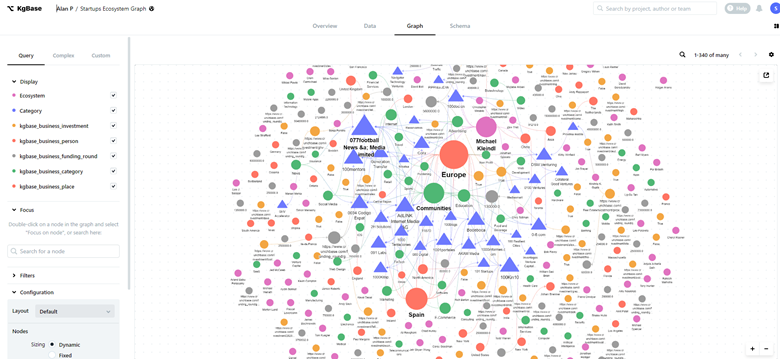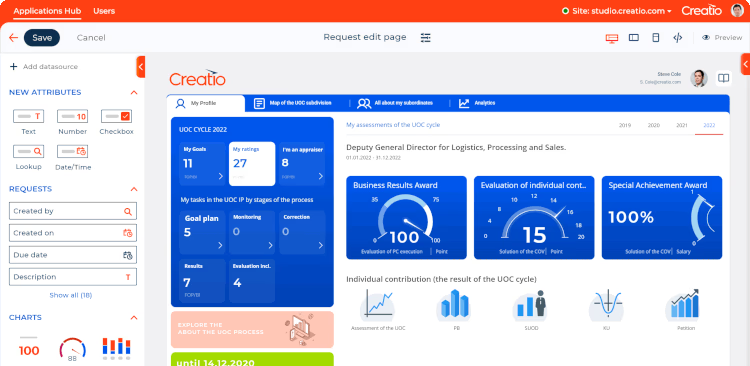No-Code Operating Systems for Open Platform Data Source Production: Save Time and Resources
No-Code Operating Systems for Open Platform Data Source Production: Save Time and Resources
Blog Article
Unlocking the Possible of Scalable Data Sources: No Coding Required for Seamless Information Integration and Monitoring
The appearance of no-code solutions is transforming how companies come close to scalable databases, enabling smooth information combination and management without the demand for substantial coding skills. This paradigm change uses considerable benefits, such as boosted ease of access for non-technical users and improved operational performance. As services seek to harness the power of their data, the vital features and prominent devices that facilitate this change warrant better evaluation. What effects do these improvements hold for the future of data-driven decision-making?
Recognizing Scalable Data Sources
Exactly how do scalable data sources suit the expanding demands of contemporary applications? Scalable data sources are created to take care of boosting quantities of data and individual demands without compromising performance.
Along with scaling techniques, scalable databases usually include innovative building functions, such as sharding and replication. Sharding splits data into smaller sized, workable items, making it possible for parallel handling and lowering action times. Replication guarantees information schedule and toughness by producing copies of information across multiple nodes, guarding against prospective data loss.
In addition, contemporary scalable databases leverage cloud computing modern technologies, allowing dynamic source allocation based on demand. This adaptability permits organizations to respond swiftly to fluctuating work, making sure optimum efficiency and individual experience. As organizations progressively rely upon data-driven decision-making, recognizing scalable data sources becomes essential for using their potential in supporting contemporary applications.
Benefits of No-Code Solutions
As companies increasingly embrace scalable databases to handle their growing information needs, the need for easy to use advancement devices has actually likewise risen. No-code options are emerging as an essential component in this landscape, using numerous vital benefits that boost functional efficiency and access.

Second of all, these services considerably accelerate the development procedure. By getting rid of the need for coding, companies can quickly model applications, iterate on layouts, and deploy remedies in a fraction of the time called for by standard methods. This dexterity allows businesses to react promptly to market demands and changing conditions.
Furthermore, no-code platforms commonly come furnished with pre-built design templates and integration capacities, simplifying the connection with existing systems. This lowers the intricacy traditionally related to data assimilation, inevitably decreasing the complete cost of ownership. Consequently, companies can concentrate on leveraging information understandings as opposed to getting slowed down in technological intricacies, optimizing their strategic possibility.
Key Features for Information Assimilation
Reliable data assimilation is vital for companies looking for to harness the full possibility of their scalable databases. Key features that assist in smooth information assimilation include robust data ports, automated information mapping, and real-time data synchronization.
Robust information connectors make it possible for organizations to link various information resources, whether they stay on-premises or in the cloud, making certain detailed accessibility to diverse datasets - no-code. Automated data mapping simplifies the process of lining up disparate information styles and structures, permitting quicker and much more exact assimilation procedures. This feature reduces the requirement for manual treatment, minimizing the potential for errors
Real-time data synchronization is one more vital feature that ensures information uniformity throughout systems. By updating data in real-time, companies can keep a exact and up-to-date view of their info landscape, which is important for timely decision-making. In addition, aesthetic analytics and straightforward control panels improve the exposure of incorporated data, allowing stakeholders to obtain workable understandings easily.
Finally, data governance abilities make sure compliance with laws and interior plans, guarding delicate details while advertising a society of data find here stability. Collectively, these functions encourage companies to achieve reliable and efficient data integration.
Popular No-Code Tools Available
Organizations significantly count on no-code tools to improve their information integration procedures and improve operations. These platforms get rid of the need for considerable shows knowledge, enabling users to develop applications and take care of data with instinctive aesthetic user interfaces. Among the most prominent no-code tools are Airtable, Zoho Creator, and Bubble, each offering unique attributes customized for different service requirements.
Airtable combines the simplicity of spread sheets with try here the functionality of click for more info databases, enabling individuals to organize and collaborate on data successfully. Zoho Creator provides a considerable suite of customizable applications, making it possible for customers to automate workflows and integrate with various other Zoho products perfectly. Bubble attracts attention for its capacity to produce innovative internet applications without coding, dealing with business and start-ups alike.
Additionally, tools like Zapier and Integromat assist in automated operations by incorporating numerous applications, making it possible for users to attach information sources easily. These no-code services not only save time but likewise encourage teams to focus on critical campaigns rather than technological hurdles. As companies proceed to accept digital improvement, the adoption of no-code devices is set to transform the method information combination and management are come close to, driving performance and innovation.
Real-World Usage Situations
Countless industries have actually successfully carried out no-code devices to attend to certain difficulties and boost operational effectiveness. In the health care sector, for instance, carriers use no-code systems to improve individual document management and visit organizing. By incorporating various information resources without comprehensive coding, medical care experts can focus much more on client care instead than administrative jobs.
In retail, companies leverage no-code databases to manage supply and sales information in actual time. no-code. This enables quick decision-making pertaining to stock degrees and promotional methods, eventually improving customer fulfillment and sales efficiency
Moreover, banks have actually taken on no-code services to automate conformity reporting and information analysis, increasing and decreasing hand-operated errors response times to regulatory modifications.

These real-world use cases illustrate the versatility and efficiency of no-code tools in various sectors, proving that scalable data sources can drive advancement and operational effectiveness without the demand for extensive programming knowledge.
Conclusion
Finally, the combination of no-code services right into scalable data source administration represents a significant innovation in information dealing with capabilities. By assisting in smooth connections between diverse data sources and automating workflows, these devices encourage organizations to efficiently manage expanding information volumes without the requirement for technological knowledge. The resultant enhancement in operational effectiveness and data-driven decision-making underscores the transformative capacity of these innovative methods within different sectors, inevitably supporting strategic goals and fostering organizational growth.
Duplication ensures information schedule and durability by creating copies of information across numerous nodes, protecting against prospective data loss. - no-code
Robust data ports allow organizations to connect various information resources, whether they reside on-premises or in the cloud, guaranteeing thorough accessibility to diverse datasets. Automated information mapping simplifies the procedure of aligning inconsonant information layouts and structures, enabling for quicker and much more accurate integration processes.Real-time information synchronization is another essential feature that makes sure information consistency across platforms. By facilitating seamless links in between diverse information resources and automating process, these devices encourage organizations to effectively handle growing information volumes without the need for technological expertise.
Report this page